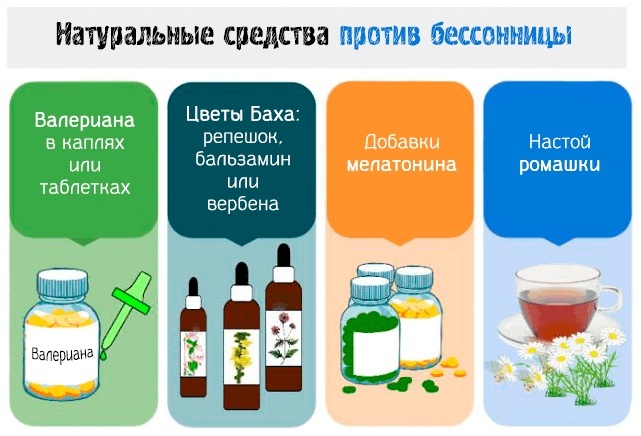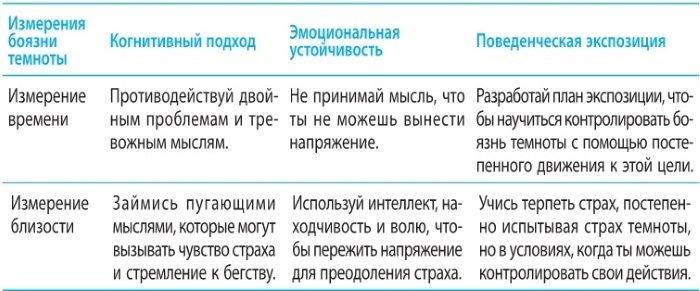Content
- The reasons for the development of cholecystitis in children
- Stages and types
- Symptoms of the acute and chronic forms of the disease
- Complications
- Diagnostics
- Treatment of cholecystitis in children
- Diet and diet
- Drug therapy
- Phytotherapy
- Physiotherapy
- Surgery
- Washing of the gallbladder and biliary tract (tubage)
- How to remove an attack of cholecystitis from a child at home
- Clinical guidelines
- Video about cholecystitis
Cholecystitis in children occurs often and in most cases is a consequence of urolithiasis. The disease is characterized by an inflammatory process that affects the gallbladder. The child develops characteristic clinical symptoms, with which it is necessary to go to the hospital. A comprehensive examination will help identify pathological processes and select the most effective treatment.
The reasons for the development of cholecystitis in children
Cholecystitis in children is provoked by pathogens that enter the gallbladder through the blood, lymph or intestines. Pathological processes develop in violation of the protective function of the liver or damage to the bile ducts.
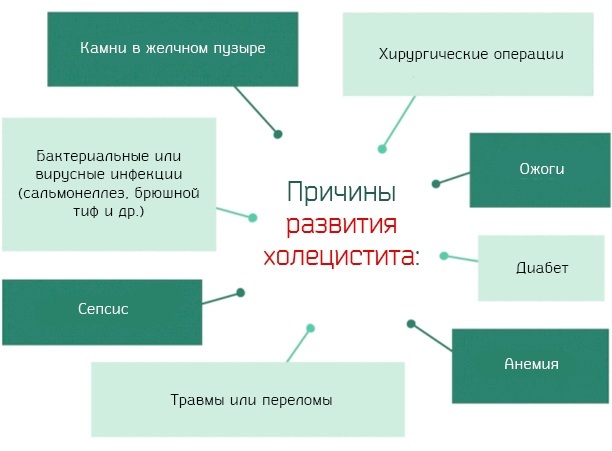
The disease is provoked numerous factors:
- inflammatory foci in the oral cavity (tonsillitis, caries);
- infectious lesion of the gastrointestinal tract;
- chronic diseases of the digestive system;
- parasitic damage to the human body;
- prolonged constipation;
- sedentary lifestyle;
- endocrine system diseases;
- mechanical damage to the organs of the digestive system;
- allergic reaction to food;
- poisoning of the body with chemicals;
- emotional stress;
- improper and prolonged treatment with certain drugs;
- congenital anomalies in the development of the gallbladder and ducts;
- improper diet, violation of the regime, abuse of harmful products;
- genetic predisposition.
The gastroenterologist will help to determine the provoking factor and the degree of development of the inflammatory process, prescribing the most informative examination for the patient.
Stages and types
The inflammatory process in the gallbladder develops in stages, at each of which characteristic clinical symptoms appear.
In medicine, there is the following classification of pathology:
| Name | Description |
| Chronic cholecystitis | The disease occurs as a result of improperly conducted therapy for an acute form of cholecystitis or against the background of other chronic pathologies. |
| Acute cholecystitis | An acutely manifested inflammatory process, in which clinical symptoms often bother a person at night. The signs are pronounced. |
| Catarrhal | A disease in which the walls of the gallbladder thicken, the mucous membrane also atrophies. |
| Phlegmonous | A pathological condition in which purulent inflammation develops, affecting all layers of the walls of the gallbladder. |
| Gangrenous | A severe form of cholecystitis, which is characterized by the formation of necrotic areas on the walls of the gallbladder. In this situation, there are always serious complications. |
| Calculus | The gallbladder increases in size, its walls become inflamed and thickened. Stones of various sizes and purulent impurities accumulate in the cavity of the organ. |
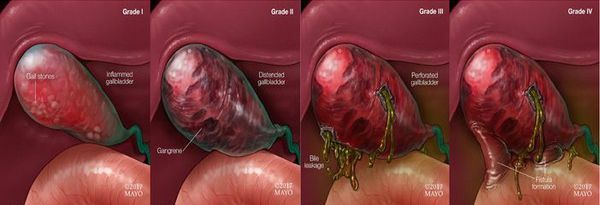 Children are more often diagnosed with a chronic form of cholecystitis, while the disease proceeds without pronounced symptoms.
Children are more often diagnosed with a chronic form of cholecystitis, while the disease proceeds without pronounced symptoms.
Symptoms of the acute and chronic forms of the disease
The clinical picture of cholecystitis in children depends on the degree of development of the inflammatory process and damage to the biliary system. The main symptom is a strong pain syndrome, which is felt on the right side under the ribs. Irradiates to the right shoulder blade and shoulder. Pain syndrome occurs acutely and unexpectedly, lasts a long time. It is often provoked by spicy or fatty foods.
Other accompanying symptoms include the following:
- bitter taste in the mouth;
- unpleasant odor;
- a yellow coating is formed on the tongue;
- worried about frequent belching;
- gas formation increases;
- appetite worsens;
- worried about insomnia;
- body temperature rises slightly;
- stool is disturbed, constipation is replaced by diarrhea;
- weakness and irritability are present.
The child complains of heaviness in the solar plexus area, he is tormented by severe nausea, sometimes vomiting. In some children aged 4-6 years, cholecystitis is blurred, the symptoms are mild, so it is difficult to diagnose the pathology immediately.
Symptoms also depend on the form of the disease:
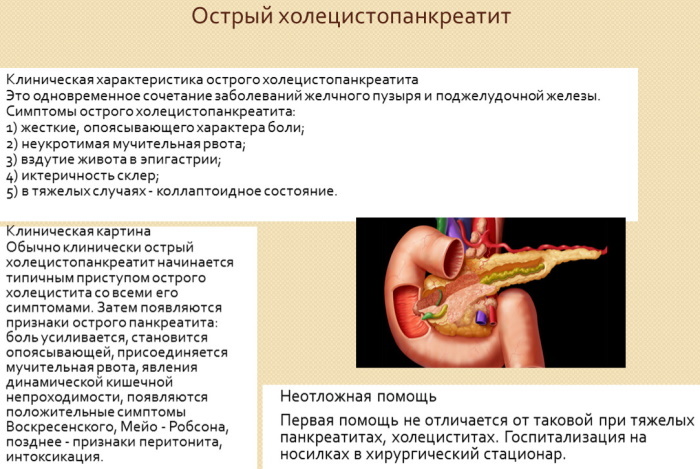
| Cholecystitis type | Symptoms |
| Spicy |
|
| Chronic |
|
Pain syndrome often worsens after physical activity or against the background of the use of prohibited foods (fatty, spicy, salty foods). Its duration is several hours or even days.
Complications
Cholecystitis (symptoms in children will help determine the degree of development of the inflammatory process), in the absence of timely diagnosis and correctly selected therapy, progresses rapidly.
A small patient runs the risk of facing the following complications: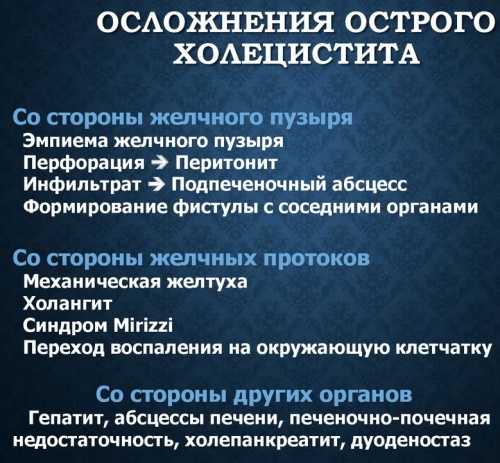
| Name | Description |
| Pancreatitis | A group of diseases or syndromes in which the inflammatory process affects the pancreas. Enzyme production is disrupted, resulting in digestive problems. |
| Purulent inflammation | Acute development of the inflammatory process with an accumulation of purulent mass. The disease progresses rapidly and leads to serious complications (perforation of the walls of the gallbladder, peritonitis). |
| Sepsis | A pathological condition in which the bacterial flora enters the bloodstream, provokes a deterioration in health and spreads throughout the body. |
A complication of cholecystitis in children is also a rupture of the gallbladder, the development of peritonitis. The same goes for abscesses and adhesions. Damage to the gallbladder is a dangerous condition for a child and can even be fatal without medical assistance.
Diagnostics
Cholecystitis (symptoms in children depend on the degree of development of the inflammatory process) requires a comprehensive examination, taking into account all the signs and complaints of the child. A pediatrician doctor performs an examination, prescribes tests and a consultation with a specialized specialist (gastroenterologist).
The following tests will help diagnose the disease: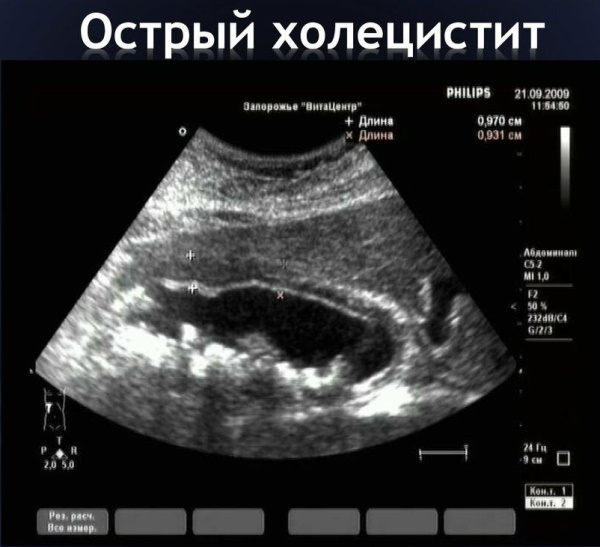
| Name | Description |
| Blood analysis | Specialists determine the blood counts, which change if an inflammatory process develops in the child's body. |
| Stool examination | The results of the study will help to identify food residues, fibers and fats in the biological material, which indicates damage to the organs of the digestive system. |
| Duodenal intubation | An informative research method that allows you to assess the composition of bile and gallbladder motility. |
| Ultrasound examination (ultrasound) | The specialist examines the gallbladder and its ducts. Reveals the development of pathological processes and changes in the structure of the organ. |
| Cholecystography | X-ray examination method, which allows a specialist to carefully examine the gallbladder and its ducts, to determine pathological changes. |
| Fibrogastroduodenoscopy (FGDS) | The examination is appointed in order to confirm or deny the development of the inflammatory process in the organs of the digestive system. |
Diagnostic measures will help differentiate the disease and determine the degree of development of the inflammatory process. Results are important for the correct and effective treatment regimen.
Treatment of cholecystitis in children
Acute cholecystitis in a child requires urgent hospitalization and bed rest. Medicines are selected for a small patient, taking into account the results obtained after the examination. Complex therapy requires a strict adherence to dietary nutrition. It is important to strictly adhere to the dietitian's prescriptions in order to prevent the occurrence of serious complications.
Diet and diet
Complex treatment of cholecystitis is carried out using traditional drugs, but it is important for all young patients to eat right and follow the regimen. Remember to drink more clean water. Eat small, fractional meals throughout the day.
| Featured Products | Prohibited foods |
|
|
All dishes are necessarily steamed, boiled or baked. It is necessary to adhere to a diet during treatment and for some time after recovery. A properly composed diet will not only reduce the symptoms of cholecystitis in children, but also prevent a secondary relapse of pathology.
Drug therapy
Cholecystitis (symptoms in children require a complete medical examination and consultation with a gastroenterologist) must be treated with drugs that a specialist selects for a child on an individual basis. With an exacerbation of the inflammatory process, a small patient is hospitalized. A satisfactory condition allows for therapy at home, but strictly observing all the prescriptions of the attending physician.
To combat inflammation, the following drugs are prescribed:
| Drug group | Name | Application |
| Antispasmodics | Drotaverin, No-Shpa | Medication relaxes smooth muscles and relieves muscle spasms. The tablets are taken orally, regardless of food. Children's dosage depends on age and is 40-120 mg 2-3 times a day.
|
| Antibacterial drugs | Tsiprolet, Ceftriaxone | The drugs affect the pathogenic flora. Children are prescribed 20 mg / kg 2 times a day. The treatment lasts 10-14 days. |
| Anthelmintic drugs | Nemozole, Furazolidone | Medicines are prescribed to patients if parasites are the cause of the inflammatory process in the gallbladder. The tablets should be taken with or after meals. Pediatric dosage depends on the patient's body weight and is 15 mg / kg 2 times a day or once a day. After 2 weeks, if necessary, the reception should be repeated. |
| Choleretic drugs | Allochol, Hofitol | Medicines increase the flow of bile. The drug should be taken after meals. Children are prescribed 1 tablet 3 times a day. The course of treatment lasts 3-4 weeks. |
| Hepatoprotectors | Essentiale, Essliver Forte | Medicines restore damaged liver cells and reduce the negative effect of pathogens on the organ. For children, the drug is administered intravenously. The therapeutic dosage is 5-10 ml per day. Intravenous injections are given for 10 days. |
| Sedatives | Novopassit, Tenoten | The medicine is prescribed for children with sleep disturbances, insomnia. Patients should take 5 ml 3 times a day. |
Additionally, small patients are prescribed vitamin complexes, which not only increase the body's defenses. They accelerate metabolic processes, normalize the biochemical composition of bile, and reduce the level of bad cholesterol.
Phytotherapy
Traditional medicine has a large number of recipes for healers and healers that will help reduce the negative manifestations of cholecystitis in children. It is important to use any prescription only after consulting your doctor. Natural ingredients are safe for human health, but there is always a risk of an allergic reaction or individual sensitivity.
Effective recipes: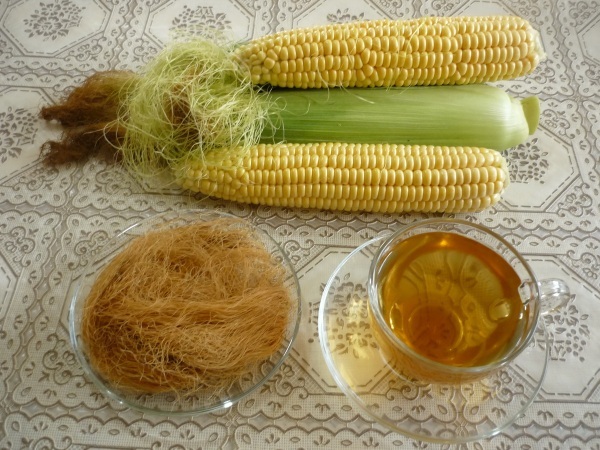
| Name | Recipe | Application |
| Chamomile and immortelle | Mix herbs and pour 2 tablespoons. collection with boiling water (500 ml). Insist for 30-40 minutes and drain. | The finished broth is recommended to be taken orally. Children are given 50 ml 2 times a day. |
| Herbal collection | Mix in equal proportions elecampane, string and mint. Pour 1 tbsp. collection with hot water (1 tbsp.). Insist and strain. | The resulting product is recommended to be taken by children 3 times a day, 50 ml each, mainly before meals. |
| Corn silk | Brew 1 tbsp. dry raw materials with hot water (1 tbsp.). Insist 1 hour and strain. | Corn silk is a natural cholekinetic that improves the flow of bile and reduces its viscosity. The finished broth should be taken every time before meals for 0.5 tbsp. |
With cholecystitis, children can also be given red rowan juice, 3 times a day, 30-50 ml each, pre-add natural honey. A rosehip-based decoction not only reduces the inflammatory process, but also increases immunity.
Physiotherapy
Cholecystitis (symptoms in children increase as the pathological processes progress) of the chronic form is characterized by periodic exacerbations and periods of remission. In such a situation, the gastroenterologist advises his patients to attend physiotherapy procedures. Such treatment can prevent the exacerbation of the inflammatory process and improve the outflow of bile.
Recommended physiotherapy treatments:
- drug electrophoresis;
- inductometry;
- UHF.
Physiotherapy helps to restore the correct functioning of the gallbladder, reduce the present symptoms of cholecystitis and improve the overall well-being of the child.
Surgery
Surgery is prescribed for patients in emergency situations or when complications arise. This concerns the formation of large stones and blockage of the bile ducts. The operation is also performed if there is a threat to the life of the little patient.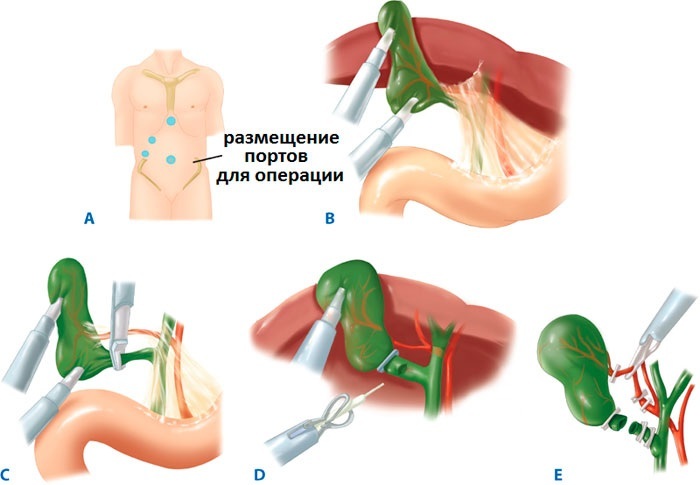
Surgical treatment is carried out by the following methods:
| Name | Description |
| Classical cholecystectomy | During surgery, the surgeon opens the anterior wall of the abdominal cavity and removes the gallbladder with stones. |
| Laparoscopic cholecystectomy | In the abdominal cavity, the specialist makes small punctures through which he brings in special medical instruments and performs all the manipulations. |
In most cases, it is the laparoscopic method of surgical treatment that is used, since it has many advantages. After the operation, there are no scars and scars, and the patient also recovers quickly.
Washing of the gallbladder and biliary tract (tubage)
Tubage is a medical procedure used to cleanse the gallbladder. Medical manipulations prevent stagnation of bile, against the background of the accumulation of which stones are formed. Washing is carried out in the hospital by means of a probe or at home. The procedure has certain contraindications, so only a gastroenterologist prescribes it.
In the case of using special equipment, lavage resembles gastric intubation, during which the bile ducts are additionally cleansed. Probe tubage is carried out once every 5-7 days for 1.5 months.
At home, to flush the gallbladder, the patient needs to drink a glass of water with the addition of magnesium powder on an empty stomach in the morning on an empty stomach. Then, to the place where the liver is located, apply a heating pad and lie on the right side. Stay in this position for 1.5 hours. Treatment procedures should be carried out once a week for 2-3 months.
How to remove an attack of cholecystitis from a child at home
An acute attack of cholecystitis in a child can be relieved at home, but after providing first aid, it is important to immediately go to the hospital or call a doctor.
The algorithm of actions is as follows:
- Apply a cold compress to the right hypochondrium if severe pain occurs.
- Give the child antispasmodics, having previously studied the instructions for use of the drug.
- Provide the child with complete rest, and preferably bed rest, until the pain completely disappears.
- To give the patient a drink with non-carbonated mineral water.
With an exacerbation of cholecystitis in children, it is strictly forbidden to carry out enemas, warm the place of the pathological focus, where pain is felt. Give the child medications only those that were previously prescribed by a gastroenterologist. It is impossible to select drugs on your own, since the condition of a small patient can be complicated.
Clinical guidelines
Cholecystitis in children is treated with complex methods. And after the therapy, the observation of the patient does not end.
Parents are advised to adhere to the following rules:
- Within 2 years after complex therapy, carefully monitor the child's condition, since there is always a risk of secondary relapse.
- Take tests 2 times a year and take the child for a preventive examination.
- Protect the little patient from provoking factors.
- Send the child to a spa treatment.
A favorable end to therapy is considered when the child has not had relapses for 2 years. At the same time, all functions of the gallbladder and its ducts were restored. Signs of inflammation and dyskinesia are completely absent.
Cholecystitis is a dangerous disease for children and adults. Inflammation of the gallbladder is accompanied by characteristic symptoms that cannot be ignored. This rule especially applies to children, since in a small growing organism, pathological processes progress faster. Timely diagnosis and correctly selected therapy will prevent complications.
Video about cholecystitis
Komarovsky with a gallbladder:

